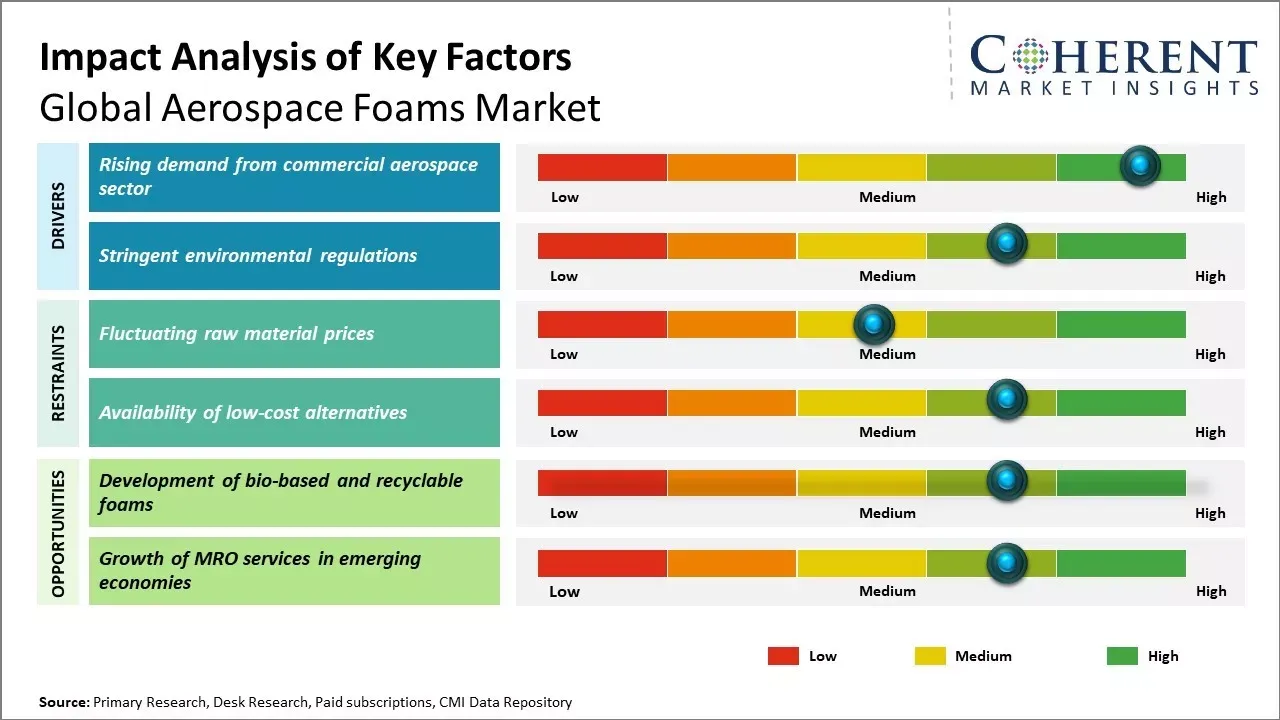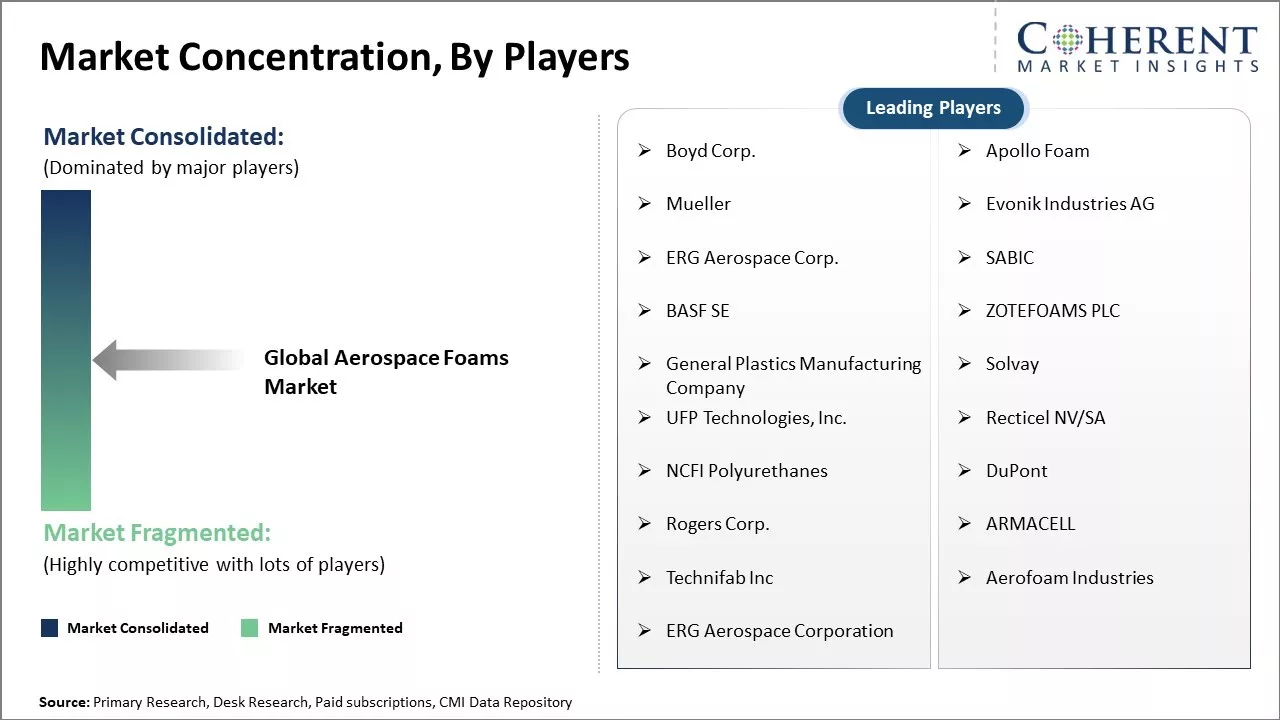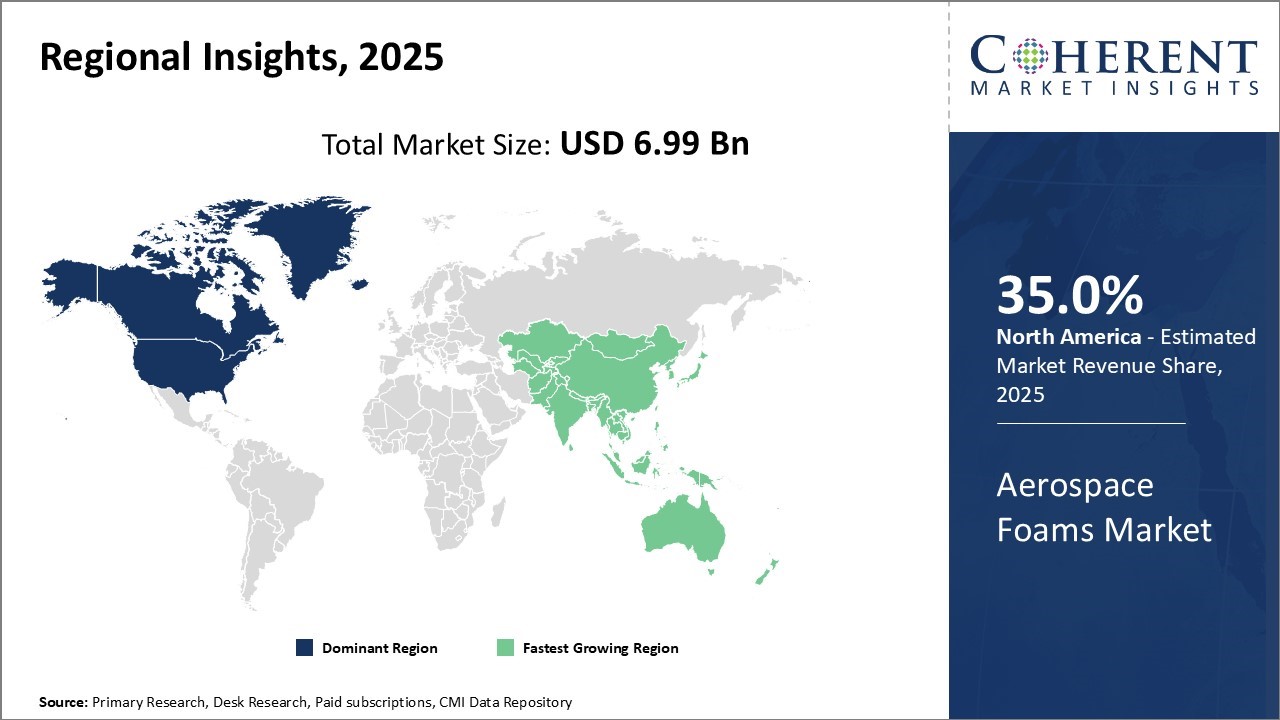The Aerospace Foams Market is estimated to be valued at USD 6.99 Bn in 2025 and is expected to reach USD 11.08 Bn by 2032, exhibiting a compound annual growth rate (CAGR) of 6.8% from 2025 to 2032.

To learn more about this report, Download Free Sample
The increasing demand for lightweight and durable foams from the commercial aircraft industry is expected to be a key driver. Major commercial aircraft OEMs are increasingly opting for foam seating to reduce weight. Furthermore, the trend towards the refurbishing of existing aircraft interiors is also promoting the use of foams. With the commercial aviation industry anticipating strong growth in aircraft deliveries over the next decade, particularly in the Asia Pacific region, the demand for foams for aircraft seating and interior applications will continue to rise. Additionally, ongoing investments by leading players in the development of advanced foam technologies will further aid market growth during the forecast period.
|
Event |
Description and Impact |
|
Geopolitical Tensions and Defense Spending Shifts |
|
|
Post-Pandemic Aviation Industry Recovery |
|
|
Sustainable Aviation and Environmental Regulations |
|
Uncover macros and micros vetted on 75+ parameters: Get instant access to report

To learn more about this report, Download Free Sample
The commercial aerospace industry is undergoing robust growth, and this trend is likely to continue in the future. Airlines worldwide are expanding their fleets to accommodate a growing base of travelers. Air travel is now accessible to a wider audience, both domestically and internationally, due to the emergence of low-cost airlines.
Most developing countries view civil aviation as a vehicle for economic development, tourism, and international trade. This has led many governments to spend considerable amounts improving airport facilities, financially and policy supporting local aviation companies, and even subsidizing them. The adoption of newer aircraft models is driving demand for lightweight, high-performance aerospace foams.
These materials are beneficial because they greatly enhance fuel efficiency due to the weight savings they provide when used in components like seats, floors, galleys, lavatories, and structural insulation. They also allow for better fuel efficiency. Increasing production rates to fulfill delivery obligations and combat massive backlog orders put heavy pressure on major airplane manufacturers like Boeing and Airbus.
This, in turn, motivates aircraft components suppliers to further improve their own production through building new factories and expanding existing ones. To meet these requirements, manufacturers of foam materials will need to increase their supply stock.
Concerns regarding the environmental impact of aviation have received attention from authorities all over the world. With respect to the framework set by international treaties on emissions, airlines face relentless scrutiny to reduce fuel burn and emissions. One of the solutions adopted towards these goals by both manufacturers and carriers is the use of lightweight materials for fittings and other internal components of the aircraft. Focus on weight reduction has a direct impact on improving operational efficiency and alignment with emission compliance systems. Aerospace foams meet this objective with their exceptional strength-to-weight ratio.
Their increased adoption results in aircraft that are hundreds or thousands of pounds lighter compared to traditional alternatives. Over the life of an airplane, the savings in fuel and reduction of CO2 emissions far exceeds foam materials’ higher upfront costs. To promote fleet modernization incorporating weight-saving technologies, several regional and national governments offer tax rebates or subsidies. Compliance with environmental regulations has thus become a key criterion in procurement decisions, increasing the need for sustainable fire-retardant and insulating foams with lower ecological footprints.
The development of bio-based and recyclable foams can open up significant opportunities in the aerospace foams market going forward. Bio-based foams made from sustainable and renewable resources like plant-based materials have lower environmental impact over conventional petroleum-based foams as they release less greenhouse gases into the atmosphere.
They can provide an eco-friendly alternative to PU and PVC foams traditionally used in aerospace. Recyclable foams also allow for parts to be more easily recycled at the end-of-life, helping aircraft manufacturers comply with increasing environmental norms.
In terms of type, polyurethane is expected to contribute 34.8% share of the market in 2025. Polyurethane is the most widely used type of aerospace foam owing to its desirable physical properties. As aircraft manufacturers aim to make planes as fuel efficient as possible, lightweight materials are highly valued. Polyurethane foams offer an excellent strength-to-weight ratio, making them well-suited for applications where weight savings can significantly boost performance and operating economics.
Another major advantage of polyurethane is its superb insulation performance. Insulation is critical in the aerospace industry, as heat must be effectively contained within the aircraft and cold temperatures resisted during high altitude flight. Polyurethane foam provides outstanding thermal insulation, efficiently regulating temperatures inside the plane. This helps improve passenger comfort while also protecting sensitive electrical systems and structural components from extreme thermal stresses.
Versatility is yet another key attribute of polyurethane foams. Engineers can precisely tune the material properties during production to achieve the required density, hardness, and resilience for different design needs. For example, soft polyurethane can absorb vibration and noise while stiff variants offer impact resistance. The ability to custom-formulate polyurethane foams allows their use in a wide variety of aircraft interior, exterior, and structural applications.
From seating to galleys to cargo holds, polyurethane foams fulfill diverse cushioning and packaging requirements. They also see extensive use in wing and fuselage cavities for sound dampening. With such multi-purpose functionality combined with lightweight durability, polyurethane remains the polymer of choice for most aerospace OEMs and Tier 1 suppliers. Its dominance in the market is set to endure with the material’s superior balance of technical benefits.
In terms of application, commercial aviation is expected to contribute 33.9% share of the market in 2025. Commercial aviation accounts for the bulk of the aerospace foams market share due to the scale of operations within this sector. Airlines operate massive fleets comprising thousands of narrow bodies, widebody, and regional aircraft to transport billions of passengers annually. Given this immense fleet, even a small per-unit savings in airframe weight through foam material optimization can collectively result in significant fuel burn reduction over the aircraft’s lifespan.
Additionally, commercial planes have extensive foam installations to ensure passenger comfort on long-haul flights. Foams are used for cushions, headrests, and window and aisle seats. The demand for compliant, antimicrobial, and noise-absorbing foams from this end-use is particularly strong. Manufacturers also look to incorporate more amenities like in-flight entertainment systems, optimized lighting, and premium seating layouts – creating further opportunities for foam integration.
Regulatory pressures to limit noise and emissions have spurred aircraft interior innovations using strategic foam placements. This application segment thus sees consistent innovation and customization of foam formulations. With air travel continuing to rise across regions, commercial aviation will sustain its lead position as the biggest market driver for aerospace foams in the foreseeable future.

To learn more about this report, Download Free Sample
North America is expected to maintain a dominant position in the global aerospace foams market throughout the forecast period, with the region projected to account for 35.0% of the market share in 2025. The region is home to prominent companies like Boeing and Lockheed Martin which makes North America a leader in aerospace foams. The production of military and commercial aircraft interior and structural components uses foam materials which these companies always need and use in excess. Coupled with precision outfitters and manufacturers, North America has a firm edge to serve as a one stop shop for aerospace foams. There is a relatively greater disposable income with a strong overall economy which further makes the entire region prosper as the new aircraft demand is constantly rising by the day. Increased fuel efficiency and reduced carbon emissions has made the aerospace industry shift towards lightweight materials which ensures that the region will always be able to offer high-performance foam solutions.
Asia Pacific is anticipated to be the fastest-growing regional market for aerospace foams, driven by expanding aerospace manufacturing capabilities and rising air travel demand. States like China, India, and Japan are experiencing growth in the production of commercial and defense aircraft due to the increased government funding on aviation infrastructure and military modernization projects. The region’s lower manufacturing costs and an improving skilled workforce are encouraging worldwide aerospace OEMs to set up local production plants. To achieve performance and weight reduction objectives, airframe and cabin interiors are increasingly using lightweight structural foams. At the same time, Southeast Asian countries, including ASEAN members, are emerging as significant regional aircraft assembly and component manufacturing hubs, which in turn drives the demand for foam materials.
The United States is the principal driver of the North American aerospace foams market. With one of the most advanced aerospace sectors globally, the U.S. leads in both commercial and defense aircraft production.
Continuous R&D in materials science, combined with steady procurement of next-generation military aircraft, supports ongoing demand for advanced foam materials. Additionally, increasing focus on lightweighting and noise insulation in aircraft cabins is propelling the adoption of innovative foam solutions across U.S.-based manufacturing lines.
China stands out as a significant growth contributor to the Asia Pacific aerospace foams market. The nation’s aggressive expansion of its domestic aviation industry—including the development of indigenous commercial aircraft such as the COMAC C919—is creating substantial demand for high-performance foam materials.
Government-backed aerospace programs and rapid growth in passenger air traffic are fostering the establishment of local supply chains for foam components. As China aims to become self-sufficient in aircraft production, the market for aerospace-grade foams is set to grow exponentially.
| Report Coverage | Details | ||
|---|---|---|---|
| Base Year: | 2024 | Market Size in 2025: | USD 6.99 Bn |
| Historical Data for: | 2020 To 2024 | Forecast Period: | 2025 To 2032 |
| Forecast Period 2025 to 2032 CAGR: | 6.8% | 2032 Value Projection: | USD 11.08 Bn |
| Geographies covered: |
|
||
| Segments covered: |
|
||
| Companies covered: |
Boyd Corp., Apollo Foam, Mueller, Evonik Industries AG, ERG Aerospace Corp., SABIC, BASF SE, ZOTEFOAMS PLC, General Plastics Manufacturing Company, Solvay, UFP Technologies, Inc., Recticel NV/SA, NCFI Polyurethanes, DuPont, Rogers Corp., ARMACELL, Technifab Inc, Aerofoam Industries, and ERG Aerospace Corporation |
||
| Growth Drivers: |
|
||
| Restraints & Challenges: |
|
||
Uncover macros and micros vetted on 75+ parameters: Get instant access to report
Share
Share
About Author
Yash Doshi is a Senior Management Consultant. He has 12+ years of experience in conducting research and handling consulting projects across verticals in APAC, EMEA, and the Americas.
He brings strong acumen in helping chemical companies navigate complex challenges and identify growth opportunities. He has deep expertise across the chemicals value chain, including commodity, specialty and fine chemicals, plastics and polymers, and petrochemicals. Yash is a sought-after speaker at industry conferences and contributes to various publications on topics related commodity, specialty and fine chemicals, plastics and polymers, and petrochemicals.
Missing comfort of reading report in your local language? Find your preferred language :
Transform your Strategy with Exclusive Trending Reports :
Frequently Asked Questions
Joining thousands of companies around the world committed to making the Excellent Business Solutions.
View All Our Clients